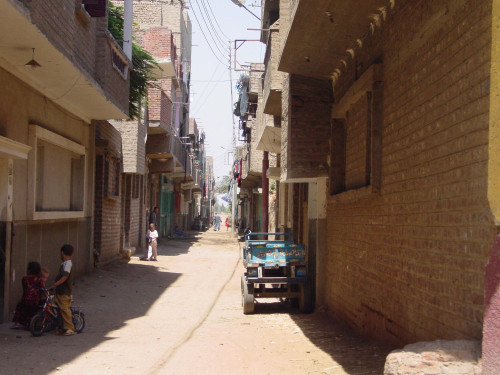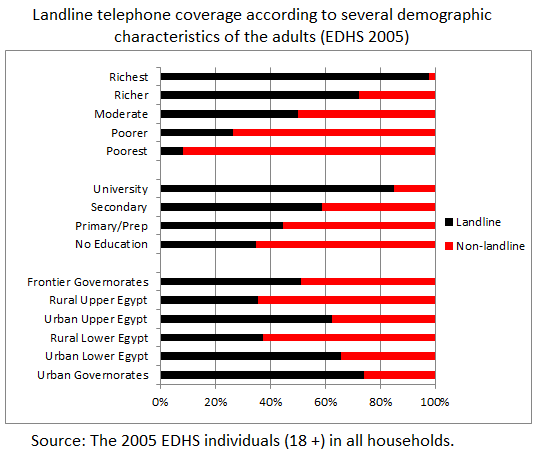DHS Data: More than Demographic and Health Indicators

Cables stretch across an alley in Koloba village, Minya province, Egypt. © 2008 Catherine Harbour, Courtesy of Photoshare
In 2006, I was working as a sampling statistician at the Public Opinion Poll Center (POPC) in Egypt where I met Dr. Sahar El-Tawila. I discovered that she had used 2005 Egypt Demographic and Health Survey data in a nontraditional way: to explore the differences between households that owned landline phones and households that did not. At the time, most survey work in Egypt was done via landline phone surveys, and she had highlighted a serious non-coverage problem: many households in Egypt did not have a landline and were therefore not being reached.
Exploring the differences between the landline and non-landline households with DHS data was crucial to guiding telephone survey methodology both at POPC and more generally in Egypt. Our conversations about the way she used the data so inspired me that I changed my master’s degree thesis topic so that I could further extend her research, under her supervision.
In our research, based on the 2005 DHS data, when about 56% of households had a landline telephone, individuals in non-landline households tended to live in rural areas and to be less educated and poorer than individuals in landline households. This meant that using landline telephone surveys as a sole interviewing tool was very risky, since it would not cover a significant portion of the population with varied characteristics (see Figure 1).
Although we were able to partially adjust for the non-coverage problem with a limited post-stratification technique using DHS data, our recommendations included moving to dual-frame designs, in which data are collected through landline phones and cell phones. Although this recommendation seemed complicated–especially for a country still in early days of conducting telephone surveys—it was well received. Starting in 2013, some of the more adventurous public opinion centers, such as Baseera, decided to take the lead and conduct dual-frame surveys, paving the way for telephone surveys that now cover most of the Egyptian population.
Although published information about landline coverage in Egypt existed, without the DHS it would have been impossible to explore the characteristics of the populations covered and not covered by landline phones–and to evaluate this “non-coverage” problem. We also used the DHS to identify the coverage covariates to be able to adjust for the problem. Even in order to design the dual-frame survey, the DHS was needed to determine the allocation between the two samples and to adjust the sampling weights. Since the last DHS conducted in Egypt was in 2008, survey practitioners eagerly await the 2014 Egypt DHS data.
As a rich dataset, the DHS is used as a source for many population demographic estimates. These estimates can be used to guide survey practices and to adjust survey estimates. Even before I joined The DHS Program, I dealt with the DHS as a data user and I realized how this survey is important not only for its explicit objectives, but also for other purposes, ones we may not even recognize–but we know users continue to find innovative ways to use DHS data. Have you ever used DHS data in a cross-disciplinary setting? Share your thoughts in the comments below!





This article took me to that time when you were working hard with Dr. Sahar to develop the POPC methodology. Your work have been the basis of the POPC work for many years. May you always be the source of development of the science in our country. Best of Luck
Thanks Shaymaa. The wonderful team in POPC motivates anyone to do his best.